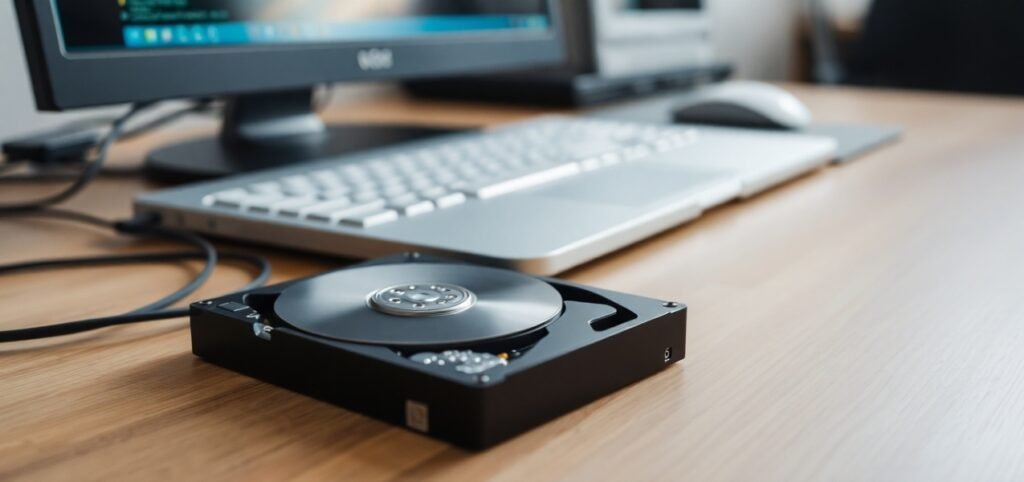In today’s digital world, our computers are often jam-packed with files, applications, and data. Over time, this can slow down performance and make it harder to find what you need. Cleaning your computer storage not only improves its speed but also extends its lifespan. This guide will show you how to clean computer storage in simple, easy steps.

Why is Cleaning Computer Storage Important?
Your computer storage is where all your data, from family photos to work documents, is kept. Over time, unused files and programs pile up, taking up valuable space. If your computer storage is full, you may experience:
- Slower performance
- Longer startup times
- Limited space for new programs or files
- Errors during updates
Keeping your storage tidy ensures your computer runs efficiently and stays in top shape.
Step 1: Delete Unnecessary Files
The first step to cleaning computer storage is removing files you no longer need. These include old documents, downloads, and large media files. Here’s how:
- Open your file explorer (Finder on Mac or File Explorer on Windows).
- Navigate to folders like “Downloads,” “Documents,” or “Pictures.”
- Delete files you no longer use by selecting them and pressing the delete key.
Tip: Check your recycle bin or trash and empty it after deleting files to free up computer storage completely.
Step 2: Uninstall Unused Programs
Unused programs take up a lot of space in your computer storage. To uninstall them:
- Windows:
- Go to the Control Panel and select “Programs and Features.”
- Click on the program you want to uninstall and select “Uninstall.”
- Mac:
- Open Finder and navigate to the “Applications” folder.
- Drag unwanted applications to the trash, then empty the trash.
By uninstalling unused programs, you’ll quickly free up computer storage and enhance performance.
Step 3: Use Built-in Cleanup Tools
Most computers come with built-in tools to clean up storage. These tools find and delete unnecessary files automatically:
- Windows Disk Cleanup:
- Search for “Disk Cleanup” in the start menu.
- Select the drive you want to clean and click “OK.”
- Check the boxes for the file types you want to remove and click “Clean up system files.”
- Mac Storage Management:
- Click the Apple menu and choose “About This Mac.”
- Go to the “Storage” tab and select “Manage.”
- Use the options provided, like “Reduce Clutter” or “Optimize Storage.”
These tools are simple to use and can reclaim a significant amount of computer storage.
Step 4: Organize and Backup Files
Cleaning computer storage isn’t just about deleting—it’s also about organizing. Move files you rarely use to an external hard drive or cloud storage. This keeps your main storage free while ensuring important files are backed up. Popular cloud services include:
- Google Drive
- Dropbox
- OneDrive
Organized files make it easier to find what you need and reduce clutter in your computer storage.
Step 5: Remove Temporary Files and Cache
Temporary files and cache data accumulate as you browse the internet or use programs. To remove these:
- Windows: Use tools like Disk Cleanup or CCleaner to delete temporary files.
- Mac: Clear browser caches and remove temporary files using tools like CleanMyMac.
Clearing these files regularly ensures your computer storage isn’t filled with unnecessary data.
Step 6: Manage Large Files
Large files often occupy the most space in your computer storage. To identify and manage them:
- Use a file size analyzer: Tools like TreeSize (Windows) or DaisyDisk (Mac) can locate the largest files on your system.
- Delete, move, or compress these files to save space.
By addressing large files, you’ll make a big difference in cleaning your computer storage.
Step 7: Use External and Cloud Storage
If your computer storage is still full after cleaning, consider using external drives or cloud services.
- External drives: Store photos, videos, and large files on USB drives or external hard drives.
- Cloud storage: Services like iCloud, Google Drive, or Dropbox offer extra space and accessibility from any device.
These options provide additional storage without cluttering your computer.
Step 8: Set Up a Maintenance Routine
Keeping your computer-storage clean is an ongoing process. Set a reminder to:
- Delete unnecessary files monthly
- Uninstall unused programs every few months
- Use cleanup tools regularly
- Backup files periodically
A routine ensures your computer-storage stays clean and your device runs smoothly.
Final Thoughts
Cleaning computer storage is essential for maintaining your computer’s performance and usability. By following these steps—deleting unused files, uninstalling programs, and using built-in tools—you can keep your storage organized and efficient. Regular maintenance will save you time and keep your computer running like new. Start cleaning your computer storage today and experience the difference!

Pingback: Windows 10: 6 Best Customization Options - Tech Passion